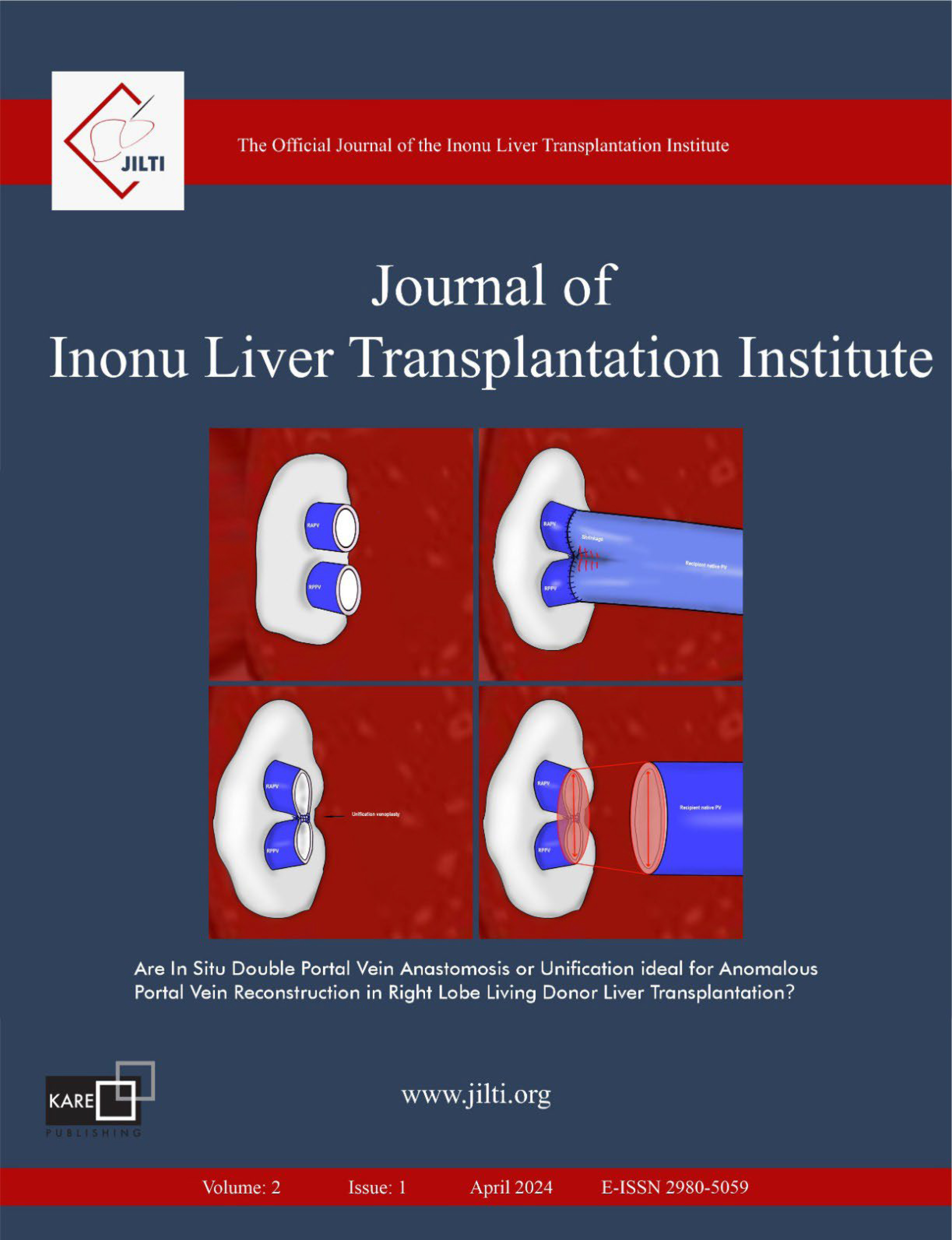Heterotopic Reversed Position Technique in Pediatric Liver Transplantation
Veysel Ersan1, Fatma İlknur Varol2, Cuneyt Kayaalp3, Sezai Yilmaz41Department of General Surgery, Medical Park Hospital, Istanbul, Türkiye2Department of Pediatric Gastroenterology, Hepatology and Nutrition, İnönü University, Faculty of Medicine, Malatya, Türkiye
3Prof. Dr. Cüneyt Kayaalp Safe Hands Clinic, General Surgeon, Istanbul, Türkiye
4Department of Surgery and Liver Transplant Institute, Inonu University Faculty of Medicine, Malatya, Türkiye
Objectives: Many challenges persist, especially when transplanting large grafts into small pediatric patients in liver transplantation (LT). In this study, we will discuss the details of the "heterotopic reversed position technique" in LT, which is applied to prevent co-plications and allows primary closure of the abdomen in the initial surgery without causing an increase in intra-abdominal pressure.
Methods: From March 2002 to December 2021, our institution performed 3121 LT of these 691 (22.1%) were pediatric LT. We present the outcomes of 11 pediatric patients who underwent LT using this method.
Results: In the postoperative phase, none of the 11 cases had vascular complications. Five of the cases were alive for an average of 9.2 years. The causes of mortality in the three cases were due to persistent hepatic encephalopathy after surgery in one case, another due to hemodynamic instability in the early postoperative period, and the third due to graft-versus-host disease that manifested two months after surgery.
Conclusion: The reversed positioning technique offers a promising solution to the challenges of pediatric liver transplant, especially in cases of acute fulminant liver failure.
Corresponding Author: Sezai Yilmaz, Türkiye
Manuscript Language: English


